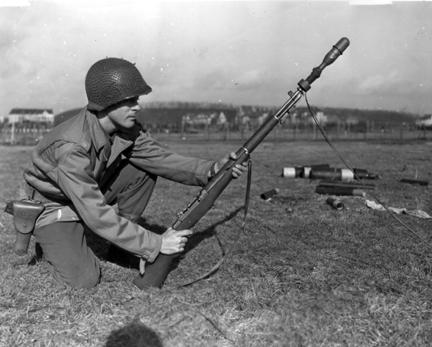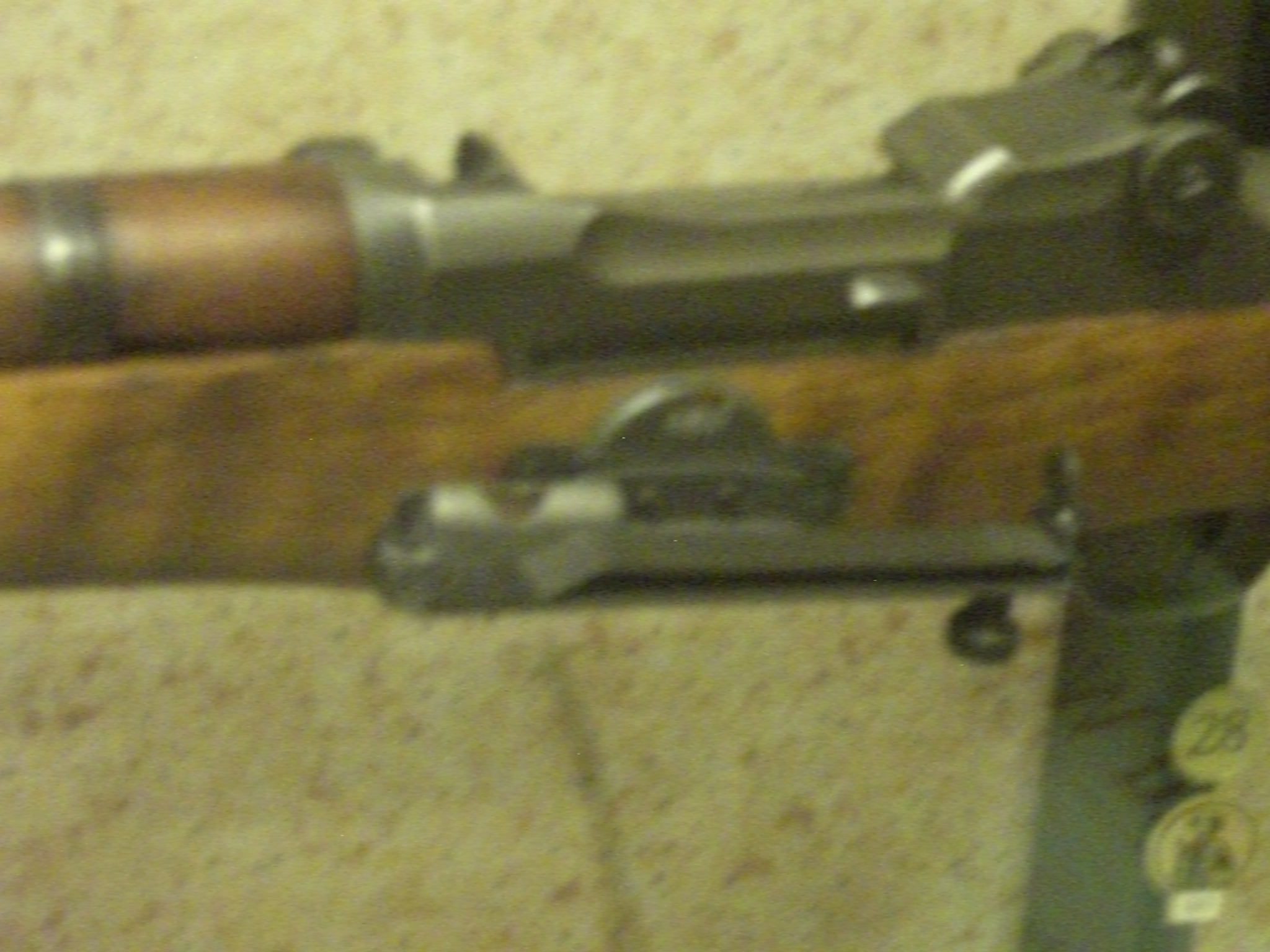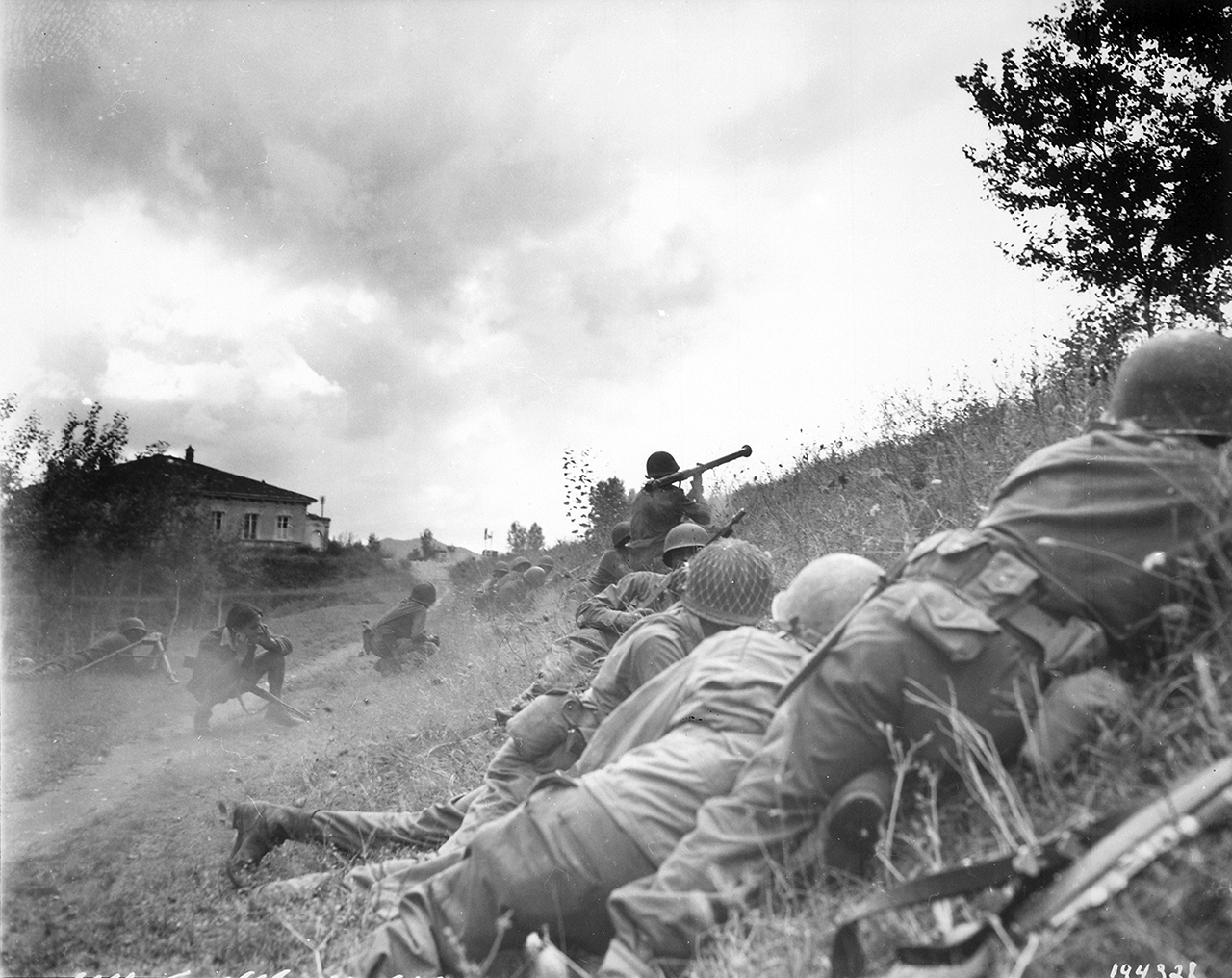|
M9 Rifle Grenade
The M9 rifle grenade was an American anti-tank rifle grenade used during World War II. It was derived as a lighter version of the M10 grenade which was too heavy to be fired to an effective distance from a rifle. (The M10 evolved into a rocket-propelled munition known as the bazooka.) Towards the end of the Second World War, its limited effect against heavy German tanks became noticed. This became apparent when US forces engaged T-34 tanks in the Korean War. It was replaced in the anti-tank role by the M28, an American version of the ENERGA anti-tank rifle grenade, Energa rifle grenade, which was itself replaced several years later by the M31 HEAT rifle grenade. It was adopted by the British as the No. 85 grenade in 1944, and was similarly superseded by the Energa in British service too during the 1950s. This new munition in the Commonwealth armoury required adapted discharger cartridges, which were made in the UK, Canada, Australia, India and Pakistan. China adopted a copy of t ... [...More Info...] [...Related Items...] OR: [Wikipedia] [Google] [Baidu] |
M7 Grenade Launcher
The M7 grenade launcher, formally rifle grenade launcher, M7, was a 22 mm grenade, 22 mm rifle grenade launcher attachment for the M1 Garand rifle that saw widespread use throughout World War II and the Korean War. The M7 was a tube-shaped device, with one end slotting over the muzzle of the rifle and attaching to the bayonet mount, and the other end holding the grenade in place. Blank (cartridge), Blank cartridges were loaded into the rifle prior to firing. When fired, the expanding gases generated by the cartridges propelled the grenade forward with considerable force. The M7 could fire grenades up to , compared with the maximum of achieved by a hand-thrown grenade. Anti-armor (M9 rifle grenade, M9), Fragmentation (M17), and smoke grenades (M22) were available for the M7. Development When the United States entered World War II at the end of 1941, all infantry were issued with the Mk 2 grenade, Mk 2 hand grenade, fragmentation hand grenade. Owing to its hand-thrown nature, it h ... [...More Info...] [...Related Items...] OR: [Wikipedia] [Google] [Baidu] |
Bazooka
Bazooka () is the common name for a Man-portable anti-tank systems, man-portable recoilless Anti-tank warfare, anti-tank rocket launcher weapon, widely deployed by the United States Army, especially during World War II. Also referred to as the "stovepipe", the innovative bazooka was among the first generation of rocket-propelled grenade, rocket-propelled anti-tank weapons used in infantry combat. Featuring a solid-propellant rocket for propulsion, it allowed for High-explosive anti-tank warhead, high-explosive anti-tank (HEAT) warheads to be delivered against Vehicle armour, armored vehicles, machine gun nests, and fortified bunkers at ranges beyond that of a standard thrown grenade or land mine, mine. The universally applied nickname arose from the M1 variant's vague resemblance to the musical instrument called a "bazooka (instrument), bazooka" invented and popularized by 1930s American comedian Bob Burns (humorist), Bob Burns. During World War II, the Nazi Germany, German arm ... [...More Info...] [...Related Items...] OR: [Wikipedia] [Google] [Baidu] |
Grenades Of The United States
A grenade is an explosive weapon typically thrown by hand (also called hand grenade), but can also refer to a shell (explosive projectile) shot from the muzzle of a rifle (as a rifle grenade) or a grenade launcher. A modern hand grenade generally consists of an explosive charge ("filler"), a detonator mechanism, an internal striker to trigger the detonator, and a safety lever secured by a cotter pin. The user removes the safety pin before throwing, and once the grenade leaves the hand the safety lever gets released, allowing the striker to trigger a primer that ignites a fuze (sometimes called the delay element), which burns down to the detonator and explodes the main charge. Grenades work by dispersing fragments (fragmentation grenades), shockwaves (high-explosive, anti-tank and stun grenades), chemical aerosols (smoke and gas grenades) or fire (incendiary grenades). Fragmentation grenades ("frags") are probably the most common in modern armies, and when the word ''grenade' ... [...More Info...] [...Related Items...] OR: [Wikipedia] [Google] [Baidu] |
World War II Infantry Weapons Of The United States
In its most general sense, the term "world" refers to the totality of entities, to the whole of reality or to everything that is. The nature of the world has been conceptualized differently in different fields. Some conceptions see the world as unique while others talk of a "plurality of worlds". Some treat the world as one simple object while others analyze the world as a complex made up of many parts. In ''scientific cosmology'' the world or universe is commonly defined as " e totality of all space and time; all that is, has been, and will be". '' Theories of modality'', on the other hand, talk of possible worlds as complete and consistent ways how things could have been. ''Phenomenology'', starting from the horizon of co-given objects present in the periphery of every experience, defines the world as the biggest horizon or the "horizon of all horizons". In ''philosophy of mind'', the world is commonly contrasted with the mind as that which is represented by the mind. ''Th ... [...More Info...] [...Related Items...] OR: [Wikipedia] [Google] [Baidu] |
Osprey Publishing
Osprey Publishing is a British, Oxford-based, publishing company specializing in military history. Predominantly an illustrated publisher, many of their books contain full-colour artwork plates, maps and photographs, and the company produces over a dozen ongoing series, each focusing on a specific aspect of the history of warfare. Osprey has published over 2,300 books. They are best known for their ''Men-at-Arms'' series, running to over 500 titles, with each book dedicated to a specific historical army or military unit. Osprey is an imprint of Bloomsbury Publishing. History In the 1960s, the Brooke Bond Tea Company began including a series of military aircraft cards with packages of their tea. The cards proved popular, and the artist Dick Ward proposed the idea of publishing illustrated books about military aircraft. The idea was approved and a small subsidiary company called Osprey was formed in 1968. The company’s first book, ''North American P-51D Mustang in USAAF-USAF Ser ... [...More Info...] [...Related Items...] OR: [Wikipedia] [Google] [Baidu] |
Vietnam War
The Vietnam War (also known by #Names, other names) was a conflict in Vietnam, Laos, and Cambodia from 1 November 1955 to the fall of Saigon on 30 April 1975. It was the second of the Indochina Wars and was officially fought between North Vietnam and South Vietnam. The north was supported by the Soviet Union, China, and other communist states, while the south was United States in the Vietnam War, supported by the United States and other anti-communism, anti-communist Free World Military Forces, allies. The war is widely considered to be a Cold War-era proxy war. It lasted almost 20 years, with direct U.S. involvement ending in 1973. The conflict also spilled over into neighboring states, exacerbating the Laotian Civil War and the Cambodian Civil War, which ended with all three countries becoming communist states by 1975. After the French 1954 Geneva Conference, military withdrawal from Indochina in 1954 – following their defeat in the First Indochina War – the Viet Minh to ... [...More Info...] [...Related Items...] OR: [Wikipedia] [Google] [Baidu] |
M31 HEAT Rifle Grenade
The M31 HEAT is a fin-stabilized anti-tank rifle grenade designed in the late 1950s to replace the Belgian ENERGA rifle grenade which was adopted by the US Army and US Marines as an emergency stop-gap measure during the Korean War. Like the ENERGA, it has a nose-initiated, based-detonated HEAT warhead, but unlike the ENERGA, the mechanical impact fuse system is replaced with a less complex and more reliable piezo-electric fuse system which also allows higher angles of impact, up to 65 degrees. History The M31 was originally designed to be fired only from the M1 Garand, but could also be fired from both the M14 and M16 rifles.Article title , Limited Range Test of the M16 Rifle with Eight Types of Rifle and Hand Grenades. By Dewey Calfee. January 1965. Dir ... [...More Info...] [...Related Items...] OR: [Wikipedia] [Google] [Baidu] |
ENERGA Anti-tank Rifle Grenade
The Energa anti-tank rifle grenade is a rifle-launched anti-tank grenade that is propelled by a ballistite-filled blank cartridge. The name ''Energa'' comes from the firm in Liechtenstein that designed it, the ''Anstalt für die ENtwicklung von ERfindungen und Gewerblichen Anwendungen'', based in Vaduz. First produced in the 1950s, by Mecar in Belgium, it was in front-line use by European armies until replaced by disposable tube-launched anti-tank rockets such as the M72 LAW. Although no longer in production, stocks of the grenade still exist and the Energa grenade remains in service with Third World countries. Armscor of South Africa manufactured the R1M1, an improved version of the Energa grenade. The original Energa grenade could penetrate 200 mm (7.8 inches) of armor or 500 mm (19.6 inches) of concrete at an angle of impact of 90 degrees. At an angle of impact of 45 degrees, the figures dropped to 100 mm (3.9 inches) and 250 mm (9.8 in ... [...More Info...] [...Related Items...] OR: [Wikipedia] [Google] [Baidu] |
T-34
The T-34 is a Soviet medium tank introduced in 1940. When introduced its 76.2 mm (3 in) tank gun was less powerful than its contemporaries while its 60-degree sloped armour provided good protection against Anti-tank warfare, anti-tank weapons. The Christie suspension was inherited from the design of American J. Walter Christie's M1928 tank, versions of which were sold turret-less to the Red Army and documented as "farm tractors", after being rejected by the U.S. Army. The T-34 had a profound effect on the conflict on the Eastern Front (World War II), Eastern Front in the World War II, Second World War, and had a short lasting impact on tank design. After the Germans encountered the tank in 1941 during Operation Barbarossa, German general Paul Ludwig Ewald von Kleist called it "the finest tank in the world" and Heinz Guderian affirmed the T-34's "vast superiority" over German tanks. Alfred Jodl, chief of operations staff of the German armed forces noted in his war diar ... [...More Info...] [...Related Items...] OR: [Wikipedia] [Google] [Baidu] |
World War II
World War II or the Second World War, often abbreviated as WWII or WW2, was a world war that lasted from 1939 to 1945. It involved the vast majority of the world's countries—including all of the great powers—forming two opposing military alliances: the Allies and the Axis powers. World War II was a total war that directly involved more than 100 million personnel from more than 30 countries. The major participants in the war threw their entire economic, industrial, and scientific capabilities behind the war effort, blurring the distinction between civilian and military resources. Aircraft played a major role in the conflict, enabling the strategic bombing of population centres and deploying the only two nuclear weapons ever used in war. World War II was by far the deadliest conflict in human history; it resulted in 70 to 85 million fatalities, mostly among civilians. Tens of millions died due to genocides (including the Holocaust), starvation, ma ... [...More Info...] [...Related Items...] OR: [Wikipedia] [Google] [Baidu] |
Rifle Grenade
A rifle grenade is a grenade that uses a rifle-based launcher to permit a longer effective range than would be possible if the grenade were thrown by hand. The practice of projecting grenades with rifle-mounted launchers was first widely used during World War I and World War II and continues to the present, with the term "rifle grenade" now encompassing many different types of payloads including high explosive, fragmentation, anti-tank warheads, concussion, smoke, incendiary, and flare missiles. Rifle grenades have largely been supplanted in the infantry fire support role by a combination of grenade launchers (typically affixed to rifles) and disposable anti-armor rockets. History Early use Adaptation of grenades for use in rifles began around the 18th century, when cup-shaped dischargers were fitted to the barrels of flintlock muskets, with the grenades propelled by the force of a blank cartridge. During the early 20th century a Japanese Colonel Amazawa experimented ... [...More Info...] [...Related Items...] OR: [Wikipedia] [Google] [Baidu] |










